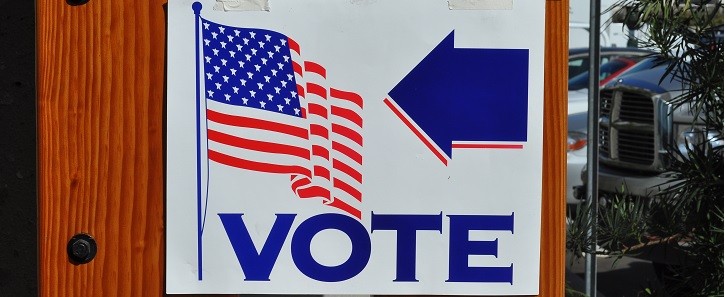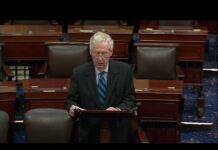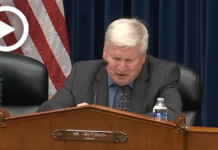Judicial Watch announced today that it sent letters to election officials in 14 counties and five states—Arkansas, California, Illinois, New York, and Oregon—notifying them of evident violations of the National Voter Registration Act of 1993. The letters detail how these states’ own reported data show that their counties removed an “absurdly low” or “impossible” number of inactive voter registrations under key provisions of the NVRA. The letters threaten federal lawsuits unless the violations are corrected in a timely fashion.
The NVRA requires states to “conduct a general program that makes a reasonable effort to remove” from the official voter rolls “the names of ineligible voters” who have died or changed residence. Among other things, the NVRA requires registrations to be cancelled when voters fail to respond to address confirmation notices and then fail to vote in the next two general federal elections. In 2018, the Supreme Court confirmed that such removals are mandatory (Husted v. A. Philip Randolph Inst., 138 S. Ct. 1833, 1841-42 (2018)).
States are required by federal law to report data concerning their removal programs to the federal Election Assistance Commission (EAC). Every few years the EAC publishes this data as part of a report it provides to Congress. The most recent report and accompanying datasets were released in August of this year.
The data show that many U.S. counties reported mere handfuls of removals—and often no removals—of registrants who failed to respond to an address confirmation and failed to vote for two consecutive elections. To identify counties that are chronically behind in removing outdated registrations, Judicial Watch looked at the last four years of reported data, from November 2016 through November 2020. It found that some of the largest counties in the country reported absurdly low removal numbers under the NVRA’s statutory removal procedure for change of address during that period. The 14 counties receiving notice letters, the size of their registration lists, and the NVRA removals they reported are:
|
County |
Total voter registrations in Nov. 2020 |
4-year total of registrations removed after notice and 2 elections |
|
San Bernardino County, Calif. |
1,294,038 |
14 |
|
Sacramento County, Calif. |
1,049,495 |
0 |
|
Contra Costa County, Calif. |
735,818 |
1 |
|
Fresno County, Calif. |
573,873 |
2 |
|
Stanislaus County, Calif. |
356,744 |
2 |
|
Solano County, Calif. |
338,764 |
4 |
|
Kings County (Brooklyn), N.Y. |
1,735,372 |
0 |
|
Queens County, N.Y. |
1,366,759 |
0 |
|
New York County (Manhattan), N.Y. |
1,250,793 |
2 |
|
Nassau County, N.Y. |
1,089,467 |
0 |
|
Bronx County, N.Y. |
867,716 |
1 |
|
Richmond County (Staten Island), N.Y. |
344,375 |
0 |
|
Multnomah County (Portland), Ore. |
571,383 |
5 |
|
Lane County, Ore. |
274,054 |
2 |
|
Total |
11,848,651 |
33 |
Robert Popper, Judicial Watch senior attorney and director of its voting integrity efforts, observed that “About 10% of Americans move every year. Those counties should generate hundreds of thousands of cancelled registrations. There is simply no way to comply with federal law while removing so few outdated registrations under its key provision.” Popper emphasized that these numbers come directly from state reports to the EAC. Popper was formerly Deputy Chief of the Voting Section of the Civil Rights Division of the Justice Department.
Judicial Watch also sent notice letters threatening lawsuits against statewide election officials in Arkansas and Illinois on the ground that many counties in those states reported similarly low numbers of statutory removals.
“Once again, Judicial Watch is leading the charge for clean voter rolls and election integrity,” said Judicial Watch President Tom Fitton. “These letters are just the beginning of another sweep, in federal court if necessary, to clean voter rolls throughout the country.”
Similar efforts by Judicial Watch in the past have led to a number of voter-roll cleanups and successful NVRA lawsuits. A 2020 letter from Judicial Watch to Allegheny County, Pennsylvania led to the removal of 69,000 outdated registrations. In 2018, the Supreme Court upheld a voter-roll cleanup program that resulted from a Judicial Watch settlement of a federal lawsuit with Ohio. Kentucky began cleaning up hundreds of thousands of old registrations in 2019 after it too entered into a consent decree in 2018 to end another Judicial Watch lawsuit. California also settled an NVRA lawsuit with Judicial Watch began the process of removing up to 1.6 million inactive names from Los Angeles County’s voter rolls.
In 2020, Judicial Watch also sued North Carolina, Pennsylvania, and Colorado for failing to clean their voter rolls.
In October 2020, Judicial Watch released a study that found 353 counties nationwide that had more voter registrations than citizens old enough to vote, i.e., counties where registration rates exceed 100%. Based on this research, in 2020, a federal court ordered the State of Maryland to produce complete voter registration records for Montgomery County that include the registered voters’ dates of birth.
In September 2020, Judicial Watch filed a lawsuit on behalf of the Illinois Conservative Union (ICU) and three of its officers, after Illinois state officials refused to allow them to obtain a copy of the state’s voter registration database. In June 2021, a federal court ruled the lawsuit could proceed.
















